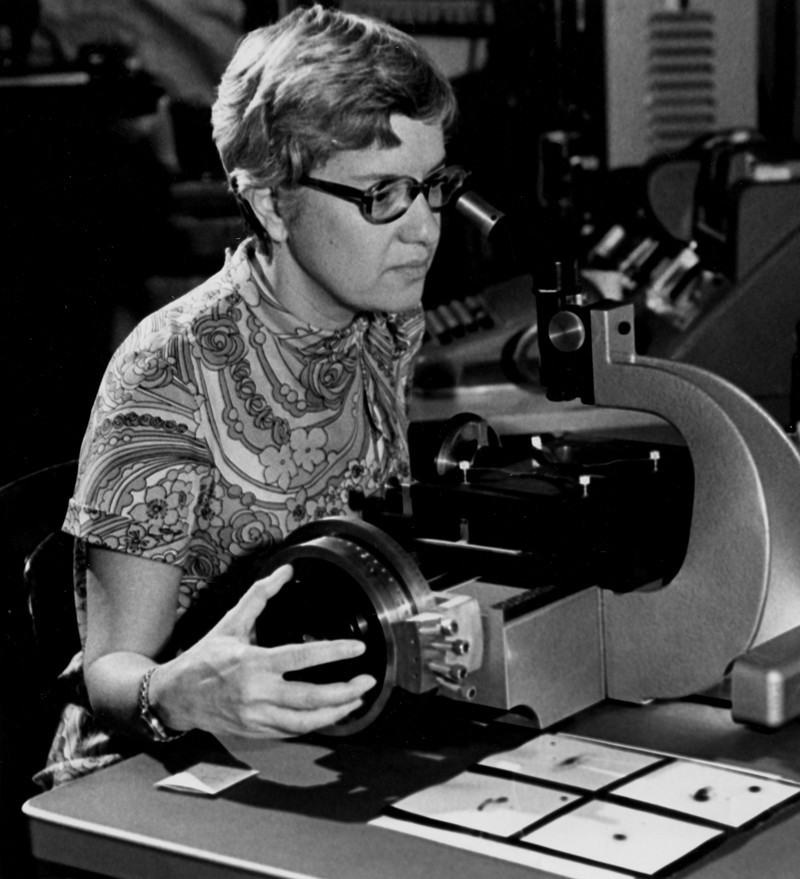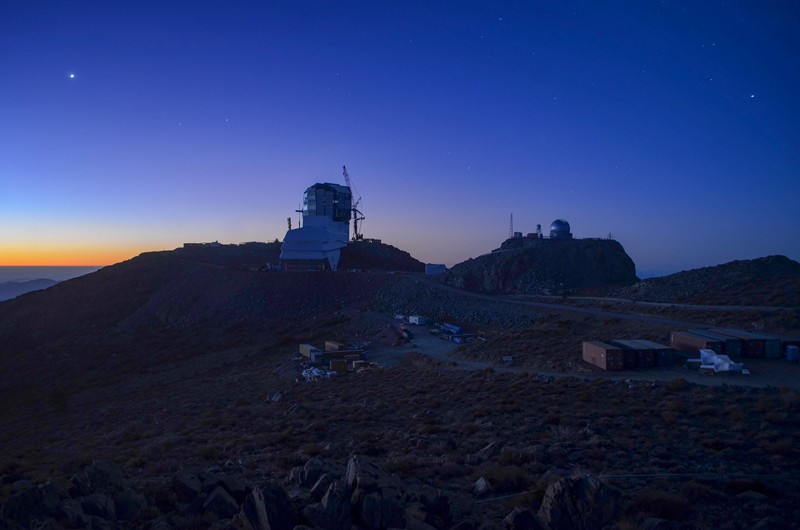Vera Rubin: A Life Jacqueline Mitton & Simon Mitton Belknap Press (2021)
The Vera C. Rubin Observatory, under construction in Chile, is scheduled to begin scientific operations in 2023. Its ten-year Legacy Survey of Space and Time hopes to “see more of the universe than all previous telescopes combined”.
How fitting. Rubin (1928–2016) dedicated her working life to the observation of ever-fainter stars in ever-more-distant galaxies, at first with telescopes that struggled to see clearly beyond our Milky Way. She is perhaps best remembered for her careful, high-precision observations that provided evidence for the existence of dark matter, the mysterious substance that makes up 85% of the Universe’s mass.
Also apt is that the first woman to have a large observatory named after her was an ardent advocate for equality in astronomy, and in society. A role model for many, Rubin overcame high cultural barriers to succeed in observational astronomy.
A new biography, Vera Rubin: A Life, documents her many accomplishments. The authors, astronomers Jacqueline Mitton and Simon Mitton, tell of how Rubin was born into an immigrant family in Philadelphia, Pennsylvania. Her family was impoverished by the Great Depression of the 1930s, yet she enjoyed a happy childhood with parents who supported her natural gifts for science. As a young teenager, she took part in meetings of the local amateur astronomy club. She built her own telescope from a large cardboard tube begged from a linoleum shop, and a small objective lens bought from a scientific supplier.
The book chronicles her career choices, from her studying at Vassar College in Poughkeepsie, New York, one of the few women’s universities to teach astronomy at undergraduate level in the 1940s, to her appointment in 1965 to the Carnegie Institution of Washington, where she remained until her retirement. She published her last paper in The Astrophysical Journal in 2005, when she was 77.
Rubin’s greatest passion was for spiral galaxies. It was her measurements of the speeds at which stars orbit around galactic centres, arguably her most important work, that confirmed theories of dark matter. It had long been assumed that this rotation would slow down with distance from a galaxy’s centre, just as the planets orbit more slowly the farther they are from the Sun.
One of her earliest papers, published in 1962 and using data from available star catalogues, challenged that assumption. (Classic Rubin: she threatened to withdraw it if she couldn’t include her students as co-authors.) The rotational speed, she declared, remained more or less constant as far from the centre as those data took her. The paper met with scepticism, but turned out to be true.
A few years later, she made confirmatory observations with colleague Kent Ford, who had developed electronic technology that improved the performance of even modest telescopes. These precision measurements gave cosmologists the evidence they needed for the existence of dark matter, and for how it settles like haloes around galaxies, providing the gravitational pull to keep them stable.
In the 1960s and 1970s, Rubin also made observations of quasars and dabbled in observational cosmology, researching the phenomenon of irregularities in cosmic expansion. She didn’t enjoy such ruthlessly competitive fields, write the authors, and soon retreated to studying her beloved spiral galaxies. Her numerous prizes and honours included the Gold Medal of the Royal Astronomical Society in London.
What helped her to achieve so much in an era when there was little support or understanding for women in science? Grit and family, the biography contends. She was appalled when a supervisor told her he would deliver her master’s research to the December meeting of the American Astronomical Society in his name, because she was expecting her first child in November. So her parents drove Rubin and her newborn nearly 500 kilometres to the meeting, through snowstorms, and then babysat so she could deliver the talk herself.
The biography throws in many such examples of the prejudices she faced. Another was the strong disapproval of her first (female) mentor Maud Makemson, Vassar’s head of astronomy, when Rubin got married at 20. Rubin saw no reason to forgo family for science, something that many women then feared was inevitable. She raised four children who themselves became scientists. An oft-told tale is how she sought support to observe at Carnegie’s Mount Palomar observatory in California, which had excluded female astronomers because it had only one toilet.
It was only when her career was firmly established that Rubin began to speak up against these obstacles, rather than finding ways around them. She pushed for representation of women in scientific committees and for inclusion among conference speakers. She joined demonstrations and campaigns for equal rights for women more generally.
She also took on journals: in 1970, she wrote a letter to the then editor of Nature, John Maddox, complaining about a job advertisement which offered a lower salary for women. She suggested that men should demand a lower salary, or that Nature “discontinue such discriminatory advertisements”. Maddox wrote back: “We are for the women’s liberation, but not all our readers share your views.”
Despite such splendid anecdotes, Rubin somehow fails to live and breathe on the pages of this book — to leave an impression of how it might have felt to be in her company. Yet the authors do place her story in the fascinating historical context of twentieth-century physics, when world wars, the cold war and refugee scientists from Nazi and communist regimes all played their part in launching US astronomy into space. This thread is as interesting as the recounting of Rubin’s life. We read nothing about her views on the monumental political events of her day. But perhaps it is enough to let the facts of her extraordinary achievements speak for themselves.


